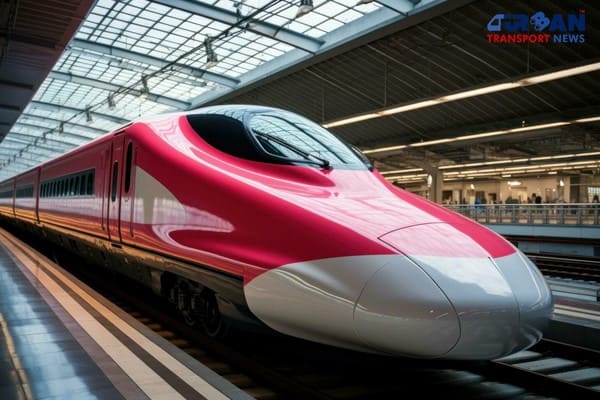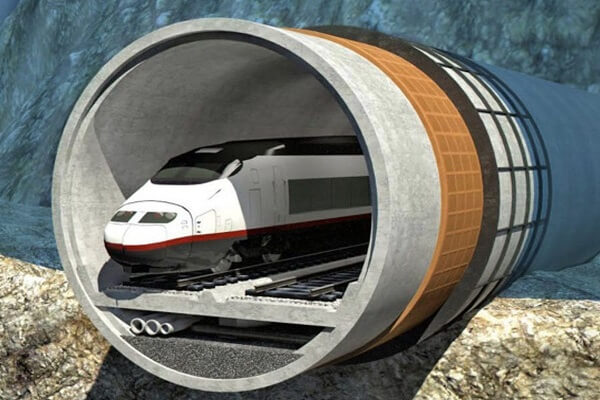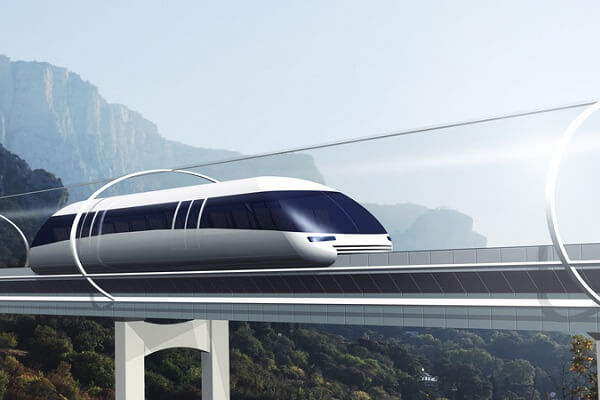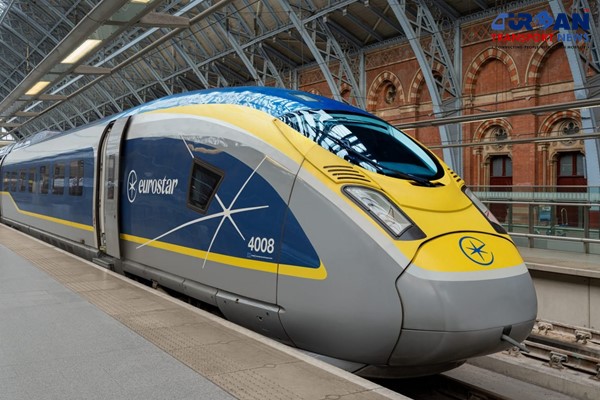 Delhi unveils ambitious Urban Mobility Vision: Luxury Metro Coaches, New Tunnels and Pod Taxi
Delhi unveils ambitious Urban Mobility Vision: Luxury Metro Coaches, New Tunnels and Pod Taxi Qatar approves Saudi Rail Link Agreement, Accelerating Gulf Railway Vision 2030
Qatar approves Saudi Rail Link Agreement, Accelerating Gulf Railway Vision 2030 UP Govt plans to introduce Water Metro services in Ayodhya, Varanasi & Prayagraj
UP Govt plans to introduce Water Metro services in Ayodhya, Varanasi & Prayagraj India’s First Urban Ropeway begins Trial Run in Varanasi, Set to carry 1 Lakh passengers daily
India’s First Urban Ropeway begins Trial Run in Varanasi, Set to carry 1 Lakh passengers daily India and Bhutan to Build First-Ever Rail Link: ₹4,033 Cr Project to Boost Regional Connectivity
India and Bhutan to Build First-Ever Rail Link: ₹4,033 Cr Project to Boost Regional Connectivity Patna to launch Eco-Friendly Water Metro; Trial Run soon between Digha and Kangan Ghats
Patna to launch Eco-Friendly Water Metro; Trial Run soon between Digha and Kangan Ghats Air India Group set to launch Flights Operations from Navi Mumbai International Airport
Air India Group set to launch Flights Operations from Navi Mumbai International Airport Chennai to launch 25-Year Mobility Plan with Unified QR Ticketing and One-App Transit System
Chennai to launch 25-Year Mobility Plan with Unified QR Ticketing and One-App Transit System Kochi Metro bags ₹4.4 crore contract to prepare DPR for Mumbai Water Metro Proejct
Kochi Metro bags ₹4.4 crore contract to prepare DPR for Mumbai Water Metro Proejct Navi Mumbai International Airport set for September launch; IndiGo and Akasa Air to lead Operations
Navi Mumbai International Airport set for September launch; IndiGo and Akasa Air to lead Operations
Revolutionizing Indian Railways: The Rise of Indigenous High Speed Bullet Trains

India is embarking on a transformative journey in its railway sector with the development of indigenous bullet trains capable of surpassing speeds of 250 kilometers per hour (km/h). This ambitious endeavor is poised to redefine rail transportation in the country, promising faster, more efficient connectivity for millions of commuters.
The Genesis of India's High-Speed Rail Revolution
The inception of India's high-speed rail revolution stems from a strategic vision to modernize the nation's transportation infrastructure. Spearheaded by government initiatives, this ambitious project aims to elevate India's position on the global stage of high-speed rail networks.
Breaking Ground: The Development Process
At the heart of India's high-speed rail development lies the Integral Coach Factory (ICF) in Chennai, where meticulous design and engineering efforts are underway. Leveraging the Vande Bharat platform, renowned for its maximum speed of 220 km/h, Indian engineers are pushing the boundaries of innovation to create bullet trains tailored to the nation's unique needs.
Redefining Speed: The Technological Leap
Drawing inspiration from international models like the French TGV and the Japanese Shinkansen, India is embracing cutting-edge technology to propel its bullet trains into the future. With a focus on enhancing speed capabilities, Indian Railways is set to introduce trains capable of accelerating from zero to 100 km/h in record time, revolutionizing travel efficiency.
A Partnership with Japan: Pioneering the Mumbai-Ahmedabad Corridor
India's collaboration with Japan in high-speed rail technology has been instrumental in shaping the future of rail connectivity in the country. The Mumbai-Ahmedabad High-Speed Rail project, supported by the Japan International Cooperation Agency (JICA), represents a cornerstone in India's quest for advanced transportation solutions. With the deployment of the Shinkansen E5 series, capable of speeds up to 320 km/h, this corridor is poised to set new standards in rail travel efficiency.
Driving Innovation: Indigenous Manufacturing and Technology
Central to India's high-speed rail vision is a commitment to indigenous manufacturing and technology. The forthcoming bullet trains, designed and manufactured domestically, underscore India's capability to innovate and adapt to evolving transportation needs. With plans to operate on newly announced corridors across the country, India is charting a course towards self-reliance in high-speed rail technology.
Complementing International Collaborations: The Path Ahead
While India embraces domestic innovation, international collaborations remain pivotal in realizing its high-speed rail aspirations. The partnership with Japan, exemplified by the Mumbai-Ahmedabad corridor, serves as a testament to the synergies forged between nations in pursuit of shared transportation goals. With ongoing support from organizations like JICA and the National High-Speed Rail Corporation Ltd (NHSRCL), India is poised to accelerate its journey towards a modernized rail network.
A New Dawn for Indian Railways
India's venture into indigenous bullet trains marks a pivotal moment in the nation's transportation history. With a steadfast commitment to innovation, collaboration, and domestic manufacturing, India is laying the groundwork for a future where high-speed rail serves as a catalyst for economic growth and societal progress. As the nation gears up to unveil its cutting-edge rail infrastructure, the promise of faster, more efficient connectivity beckons, ushering in a new era of mobility for millions of Indians.







